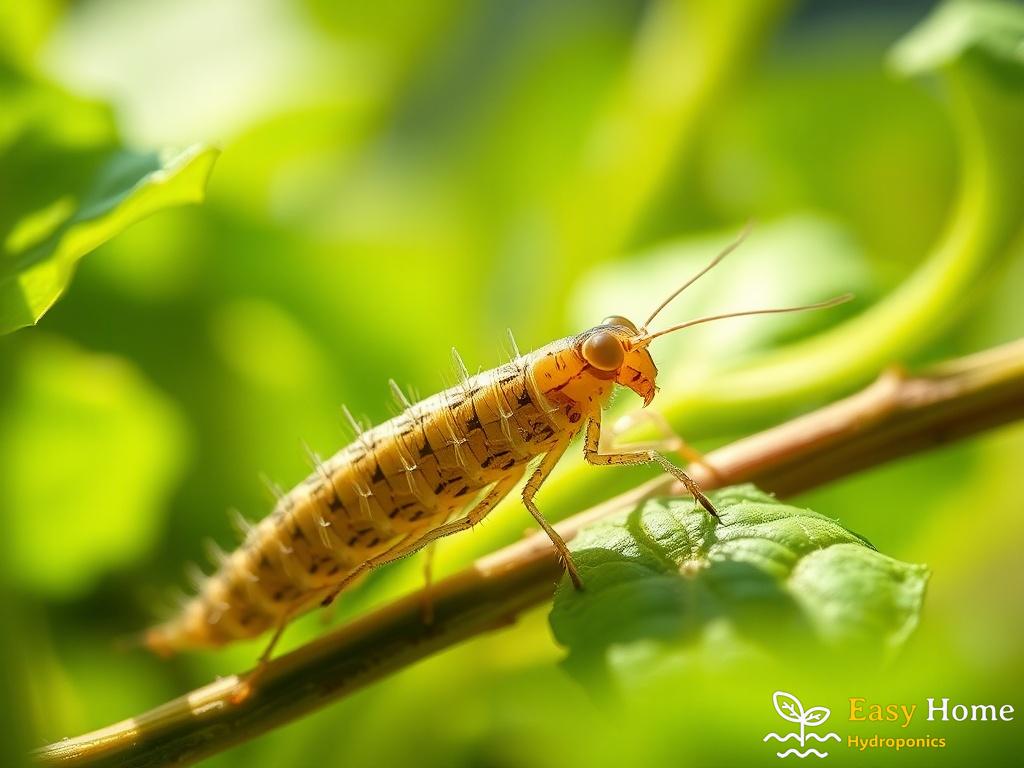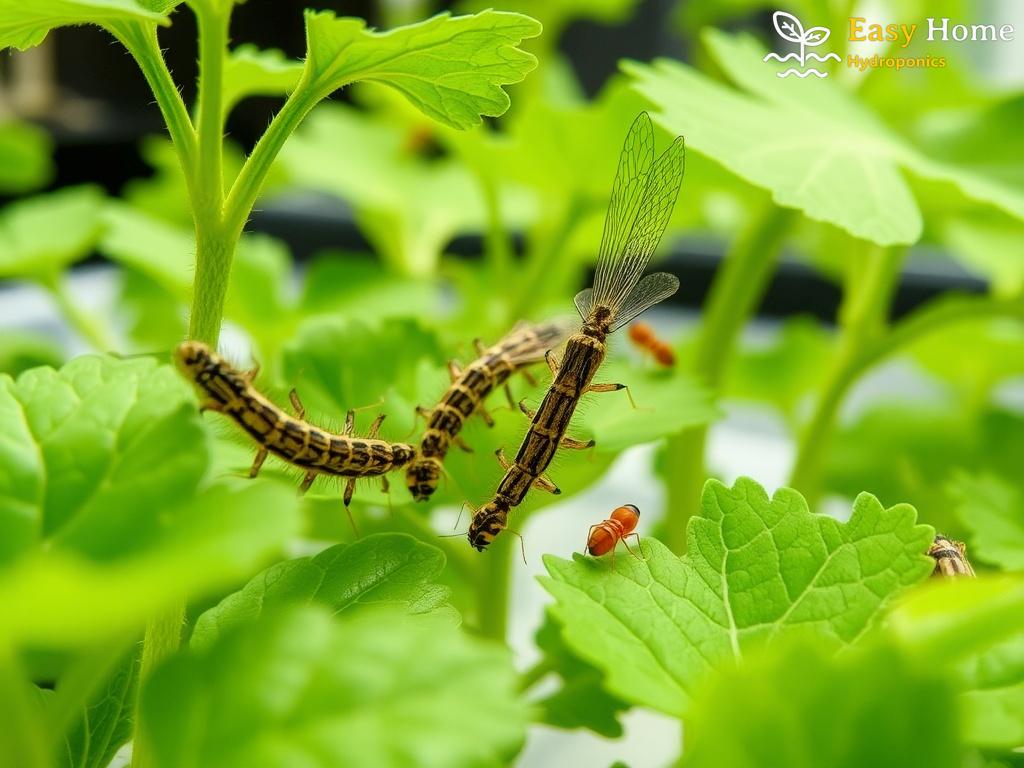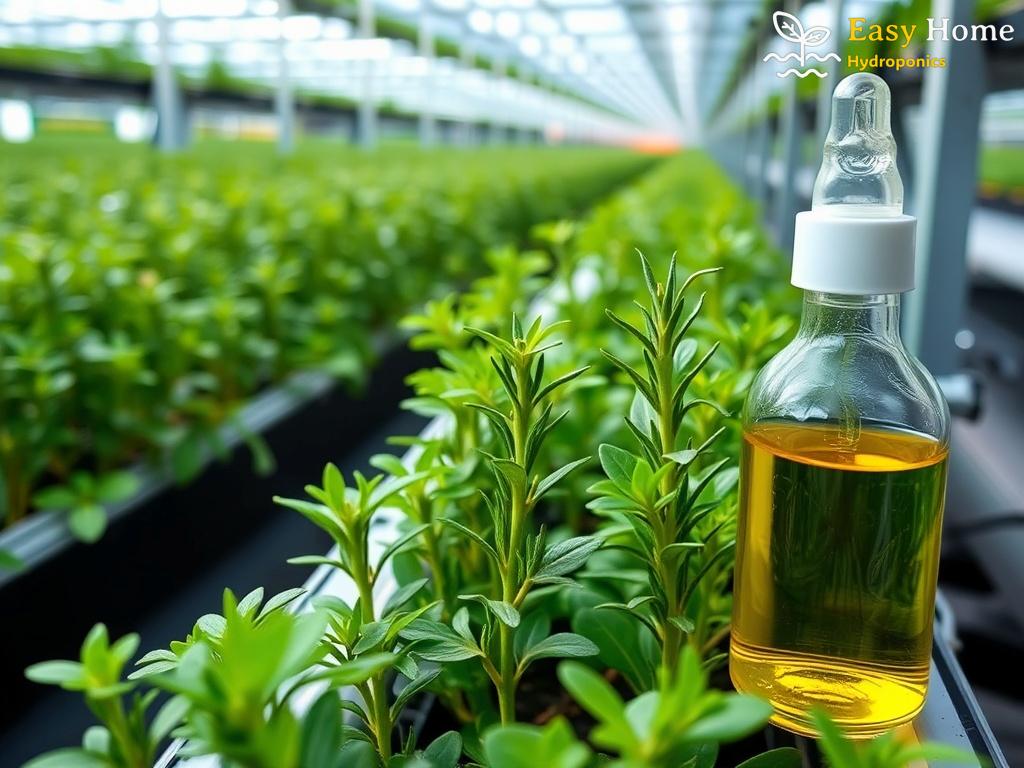Unveiling the Lacewing: Nature’s Tiny Predator

Meet the Lacewing Larvae
In the world of hydroponics, where the quest for sustainable pest control is ever-growing, lacewing larvae emerge as unsung heroes. These tiny predators, often referred to as the “aphid lions,” are nature’s answer to pest management in indoor gardens. With their voracious appetite and remarkable hunting skills, they not only keep pest populations in check but also contribute to a healthier ecosystem.
The lacewing larvae are not just pretty faces; they are equipped with powerful mandibles and a keen sense of smell that allows them to detect their prey from a distance. This article will explore the fascinating world of lacewing larvae, their role in biocontrol, and how they can transform hydroponic growing practices.
The Benefits of Lacewing Larvae in Hydroponics
Why should hydroponic gardeners consider lacewing larvae as their go-to pest control solution? The answer lies in their unique benefits. Lacewing larvae are not only effective against common pests like aphids, spider mites, and thrips, but they also promote a balanced ecosystem by minimizing the need for chemical pesticides.
Here are some compelling reasons to integrate lacewing larvae into your hydroponic system:
- Natural Predators: Lacewing larvae feed on a variety of soft-bodied insects, acting as a natural predator that helps maintain pest populations.
- Non-Toxic Solution: Unlike synthetic pesticides, lacewing larvae pose no risk to humans or the environment, making them an ideal choice for organic growing.
- Long-Lasting Impact: A single lacewing larva can consume hundreds of pests throughout its life cycle, effectively reducing pest pressure.
Integrating Lacewing Larvae into Your Hydroponic System
Now that we understand the pivotal role lacewing larvae play in pest management, how can gardeners incorporate these tiny predators into their setups? The process is surprisingly straightforward, and with a few key steps, you can harness the power of lacewing larvae to safeguard your plants.
| Step | Description |
|---|---|
| 1 | Assess Pest Levels: Monitor your hydroponic system for signs of pest infestation. |
| 2 | Purchase Lacewing Larvae: Source from reputable suppliers that offer high-quality larvae. |
| 3 | Release in Infested Areas: Introduce the larvae near affected plants to maximize their hunting efficiency. |
| 4 | Monitor Progress: Regularly check for reductions in pest populations and adjust as necessary. |
By following these steps, hydroponic gardeners can create a thriving environment where lacewing larvae can flourish and effectively combat unwanted pests. The synergy between lacewing larvae and hydroponic systems represents a promising future for sustainable agriculture.
Hydroponics Unleashed: Why Lacewing Larvae Thrive

As hydroponic gardening continues to gain traction among enthusiasts and commercial growers alike, understanding the factors that allow certain biocontrol agents to flourish becomes paramount. Lacewing larvae stand out in this context, not only for their pest-fighting prowess but also for their adaptability to hydroponic environments. The unique characteristics of these larvae enable them to thrive, making them an invaluable asset in maintaining the delicate balance of indoor ecosystems.
Adaptability to Controlled Environments is a crucial aspect of lacewing larvae’s success in hydroponics. Unlike many traditional pest control methods that struggle to maintain efficacy in enclosed systems, lacewing larvae have shown remarkable resilience. Their ability to feed on a diverse array of soft-bodied insects enables them to adapt quickly to varying pest populations. This flexibility ensures that regardless of the specific pest challenges a hydroponic gardener may face, lacewing larvae can efficiently respond and help restore balance.
The Hydroponic Ecosystem is inherently different from traditional soil-based gardening, providing a unique set of conditions for lacewing larvae. The absence of soil-bound pests and the controlled nutrient delivery systems found in hydroponics create an ideal habitat for these predators. Furthermore, the consistent moisture levels and the absence of harsh environmental fluctuations promote their survival and effectiveness. By integrating lacewing larvae into a hydroponic setup, gardeners not only benefit from their natural hunting skills but also find that these larvae can stabilize and enhance the overall health of the ecosystem.
Moreover, lacewing larvae’s Feeding Habits play a significant role in their thriving nature within hydroponics. These larvae are not just opportunistic feeders; they exhibit a selective predatory behavior that allows them to target the most problematic pests efficiently. Their diet primarily consists of aphids, thrips, and spider mites, all of which are common adversaries in hydroponic systems. By consuming these pests in large quantities, lacewing larvae can significantly reduce their populations, providing a clean and healthy growing environment.
In summary, the thriving nature of lacewing larvae in hydroponics is a testament to their adaptability, the unique conditions of hydroponic ecosystems, and their effective feeding strategies. As gardeners increasingly seek sustainable pest management solutions, lacewing larvae offer a compelling choice, combining natural efficacy with minimal environmental impact. With their ability to integrate seamlessly into hydroponic systems, lacewing larvae are indeed a beacon of hope for those aiming to cultivate lush, healthy plants without the reliance on harmful chemicals.
Pest Control Revolution: Lacewings in Action
The rise of environmentally sustainable practices in agriculture has led to innovative pest control solutions, and lacewing larvae are at the forefront of this revolution. These remarkable creatures are not just passive participants in the ecosystem; they actively engage in a battle against pests that threaten hydroponic crops. As we delve into the dynamic role lacewing larvae play, it’s clear that their presence can transform pest management strategies, making them a critical ally for hydroponic gardeners.
The Lacewing Advantage
One of the most compelling aspects of lacewing larvae is their unparalleled effectiveness as biocontrol agents. With a unique combination of adaptability, resilience, and formidable hunting capabilities, they offer a natural solution to pest problems that traditional methods often fail to address. Understanding the advantages of lacewing larvae can help growers make informed decisions in managing their hydroponic systems.
- Versatile Predators: Lacewing larvae target a variety of pests, including aphids, spider mites, and whiteflies, ensuring comprehensive pest control.
- Environmentally Friendly: They do not contribute to chemical runoff, making them safe for the surrounding environment and beneficial for organic growers.
- Rapid Population Growth: Lacewing larvae reproduce quickly, leading to a swift increase in predator numbers when pest populations rise.
- Reduction of Pest Resilience: By introducing lacewing larvae into the ecosystem, growers can reduce the likelihood of pests developing resistance to biocontrol methods.
Implementing Lacewing Larvae: Strategies for Success
To harness the power of lacewing larvae, hydroponic gardeners must adopt strategic approaches that maximize their effectiveness. The integration of these larvae into an existing pest management plan can be seamless if approached thoughtfully. Here are key strategies for successful implementation:
- Monitor Pest Populations: Regularly assess pest levels to determine the optimal time for introducing lacewing larvae.
- Optimize Release Conditions: Introduce larvae during periods of high pest activity, typically in the late afternoon or early evening when they are most active.
- Combine with Other Biocontrol Agents: Utilize lacewing larvae alongside other natural predators to create a multi-faceted approach to pest control.
- Provide a Favorable Habitat: Ensure the hydroponic setup supports the larvae’s survival by maintaining humidity and temperature levels conducive to their development.
With these strategies, hydroponic gardeners can effectively implement lacewing larvae into their systems, enhancing their pest management capabilities and promoting an eco-friendly approach to growing.
Cultivating Success: Integrating Lacewings into Hydroponic Systems
The Harmony of Nature and Hydroponics
In the quest for sustainable agriculture, the integration of lacewing larvae into hydroponic systems represents a harmonious blend of nature and technology. These tiny predators, with their impressive pest control capabilities, offer a transformative approach to maintaining plant health and vitality. As hydroponic enthusiasts explore innovative solutions, understanding the nuances of effectively incorporating lacewing larvae can pave the way for flourishing gardens.
Creating a Welcoming Environment
To successfully integrate lacewing larvae, it’s crucial to establish a welcoming environment that supports their development and hunting behaviors. Hydroponic systems, by design, offer a stable climate that can be optimized further. Maintaining consistent moisture levels, along with appropriate temperature ranges, is essential for the larvae’s survival. Additionally, providing shelter within the system, such as utilizing netting or strategically placing plants, can enhance their comfort and effectiveness. Such measures ensure that lacewing larvae not only survive but thrive, maximizing their pest control potential.
A Strategic Release for Maximum Impact
Timing is everything when it comes to releasing lacewing larvae into your hydroponic system. Understanding the lifecycle of both the larvae and the pests they target can substantially influence the success rate of your pest management efforts. Releasing these predators during peak pest activity, particularly in the late afternoon or early evening, can significantly enhance their hunting efficiency. Furthermore, monitoring pest populations regularly allows gardeners to identify critical moments when lacewing larvae can be introduced for maximum impact. This strategic approach not only reduces pests but also promotes an equilibrium within the hydroponic ecosystem.
| Factor | Lacewing Larvae | Traditional Methods |
|---|---|---|
| Environmental Impact | Non-toxic and eco-friendly | Potential chemical runoff |
| Pest Resistance | Reduces likelihood of pest resistance | Can lead to resistant pest populations |
| Effectiveness | Target multiple pest species | Often limited to specific pests |
By embracing these practices, hydroponic gardeners can cultivate success through the integration of lacewing larvae, transforming their growing spaces into thriving ecosystems. The journey toward sustainable pest management becomes not just a possibility but a reality, marking a new chapter in the evolution of hydroponic gardening.
Sustainable Solutions: The Environmental Impact of Lacewing Use
The shift towards sustainable agriculture has prompted hydroponic gardeners to seek effective pest management strategies that align with eco-friendly practices. Lacewing larvae have emerged as a powerful biocontrol agent, offering a natural solution to pest challenges while significantly reducing the environmental footprint of hydroponic systems. This section explores the multifaceted environmental benefits of lacewing larvae, demonstrating how their integration into hydroponics can foster a more sustainable agricultural future.
The Ecological Footprint of Lacewing Larvae
In the intricate web of agricultural ecosystems, lacewing larvae play a pivotal role in maintaining ecological balance. Unlike traditional pesticides, which often lead to chemical runoff and soil degradation, lacewing larvae provide a non-toxic alternative that supports the health of the environment. Their use in hydroponics not only aids in pest control but also promotes biodiversity, creating a harmonious growing space.
Comparative Analysis: Lacewing Larvae vs. Conventional Methods
To fully appreciate the sustainability of lacewing larvae, it is essential to compare their environmental impact with that of conventional pest control methods. The table below highlights key differences:
| Aspect | Lacewing Larvae | Conventional Pesticides |
|---|---|---|
| Environmental Impact | Non-toxic, promotes biodiversity | Potential chemical runoff, harmful to non-target species |
| Pest Resistance | Reduces likelihood of resistance | Can lead to resistant pest populations |
| Soil Health | Enhances soil biodiversity | Can degrade soil quality |
Embracing a Greener Future
As hydroponic gardeners increasingly embrace lacewing larvae, they not only tap into effective pest management but also contribute to a more sustainable agricultural landscape. The benefits extend beyond individual gardens; by reducing reliance on chemical pesticides, lacewing larvae help protect surrounding ecosystems and promote overall environmental health.
In conclusion, the integration of lacewing larvae into hydroponic systems represents a significant step towards achieving sustainable agriculture. Their ability to control pests naturally, coupled with the reduced environmental impact, positions lacewing larvae as a vital ally for gardeners seeking to cultivate healthy plants while preserving the planet.




